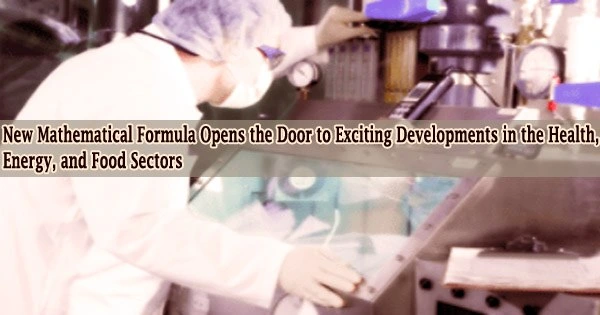A ground-breaking mathematical formula has been found that has the potential to revolutionize future medical treatments, natural gas extraction, and plastic packaging manufacturing.
The new equation, created by researchers at the University of Bristol, suggests that for the first time, perfect modeling of diffusive flow through permeable material is possible. It is the first diffusion equation to be developed in a century and represents significant advancement in the representation of motion for a variety of entities, including microscopic particles, natural organisms, and man-made devices.
Until recently, researchers studying particle motion in porous materials like biological tissues, polymers, different rocks, and sponges had to make do with approximations or limited viewpoints.
The research, which was just published in the journal Physical Review Research, offers a fresh method that offers intriguing prospects in a variety of fields, including health, energy, and the food sector.
Lead author Toby Kay, who is completing a PhD in Engineering Mathematics, said: “This marks a fundamental step forward since Einstein and Smoluchowski’s studies on diffusion. It revolutionises the modelling of diffusing entities through complex media of all scales, from cellular components and geological compounds to environmental habitats.”
“Previously, mathematical attempts to represent movement through environments scattered with objects that hinder motion, known as permeable barriers, have been limited. By solving this problem, we are paving the way for exciting advances in many different sectors because permeable barriers are routinely encountered by animals, cellular organisms and humans.”
This new fundamental equation is another example of the importance of constructing tools and techniques to represent diffusion when space is heterogeneous, that is when the underlying environment changes from location to location. It builds on another long-awaited resolution in 2020 of a mathematical conundrum to describe random movement in confined space. This latest discovery is a further significant step forward in improving our understanding of motion in all its shapes and forms collectively termed the mathematics of movement which has many exciting potential applications.
Dr. Luca Giuggioli
The ability to connect many layers of a phenomenon’s description is one of the many ways that creativity in mathematics can be expressed. It was feasible to discover the new equation in this case by first modeling random motion on a microscopic scale and then zooming out to describe the process on a macroscale.
Applying this mathematical technique to experimental applications would benefit goods and services, but more study is required.
For instance, the interpretation of diffusion-weighted MRI (Magnetic Resonance Imaging) findings will advance with the ability to precisely predict the transport of water molecules through biological tissue. In order to estimate shelf life and contamination risk, it may also provide a more accurate portrayal of air moving through food packing materials.
Additionally, documenting how foraging animals behave when confronted by large barriers like fences and highways could help conservationists make more accurate forecasts about the effects of climate change.
Over the past 20 years, the tracking revolution has produced movement data of ever-increasing amount and quality thanks to the usage of geolocators, mobile phones, and other sensors. This has brought to light the necessity for more advanced modeling tools to describe the movement of a variety of entities in their environment, including both natural and artificial objects.
Senior author Dr. Luca Giuggioli, Associate Professor in Complexity Sciences at the University of Bristol, said: “This new fundamental equation is another example of the importance of constructing tools and techniques to represent diffusion when space is heterogeneous, that is when the underlying environment changes from location to location.”
“It builds on another long-awaited resolution in 2020 of a mathematical conundrum to describe random movement in confined space. This latest discovery is a further significant step forward in improving our understanding of motion in all its shapes and forms collectively termed the mathematics of movement which has many exciting potential applications.”





